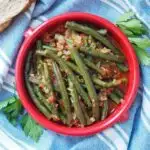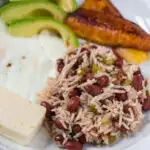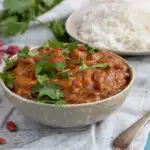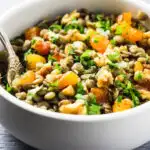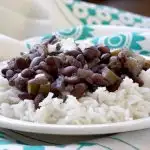Lablabi (also written lablebi) is a very simple chickpea soup or stew, but it is packed with a wonderful depth of spicy lemon and garlic flavor. It’s particularly popular in the colder months but is something you could enjoy at any time.
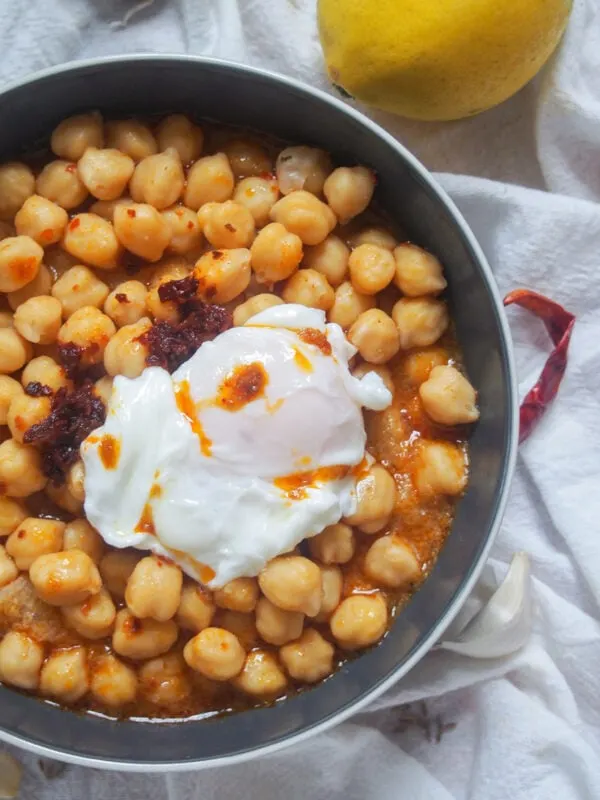
Tunisian cuisine
Tunisian food can often go a little unrecognized in other parts of the world. Often it is not distinguished from North African cuisine in general. Moroccan dishes are often what people think of when they think of the region.
While there are some overlaps in ingredients and styles, like the wide use of couscous, there are differences as well.
Tunisian cuisine has evolved from various influences including Arab, Spanish, French, and Italian (particularly Sicilian). It shares some of the common ingredients of the Mediterranean in the use of olive oil, tomatoes, and seafood.
Some Tunisian dishes have a lot of similarities to their influencing cultures, like Tunisian salad and salade Nicoise.
Dishes from Tunisian cuisine have also been adopted and adapted in other countries, such as chakchouka, also called shakshouka, which is originally Tunisian.
One of the things that distinguish Tunisian cuisine from some of its neighbors is that a number of dishes incorporate some spiciness. This is accompanied by other bright aromatic flavors including cumin, garlic, rose water, orange water, and fresh herbs.
Harissa, which is a paste made with peppers and chilis, is a common way to add some heat to a number of dishes. In this dish, while you don’t have to use harissa, it is a common addition and adds great flavor.
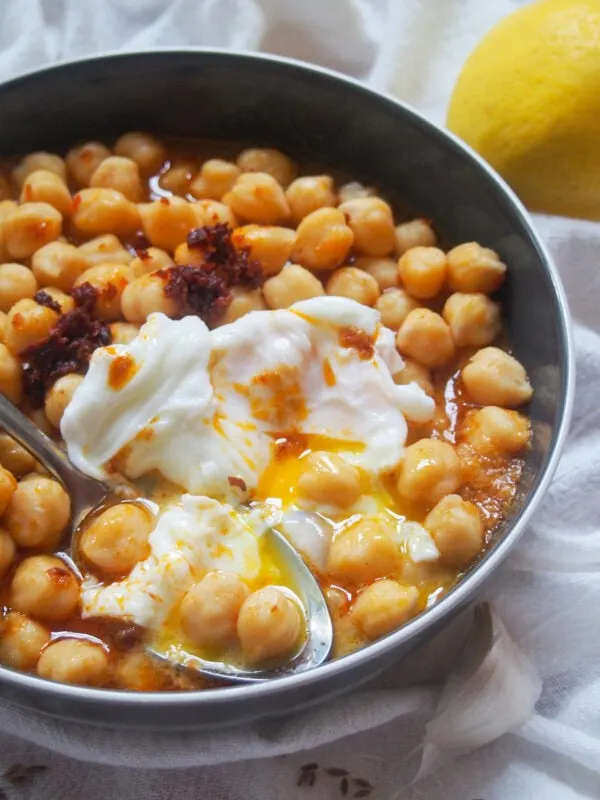
What are the origins of lablabi?
The origins of this dish are unclear. Some stories suggest wartime cooks developed the recipe as a way to feed the troops and citizens for a low cost with a good level of nutrition.
As for the name, that too is a little unclear. Although some say it is the sound the chickpeas make as they simmer away in their broth.
These days lablabi is a favorite in street stalls as a cheap breakfast.
Despite being a low-cost dish, it’s packed with flavor and really is pretty well-rounded nutritionally.
The core elements of lablabi
As mentioned, this is really a very simple dish, with the core components being chickpeas, a thin broth, and some simple seasonings. The main flavors in this are garlic, cumin, and lemon. Beyond that, things can vary.
Some add lemon in the form of preserved lemons, which have a little more of a briny flavor. Then most add some harissa to give the dish a bit of spice. You can also add some fresh herbs like cilantro or parsley.
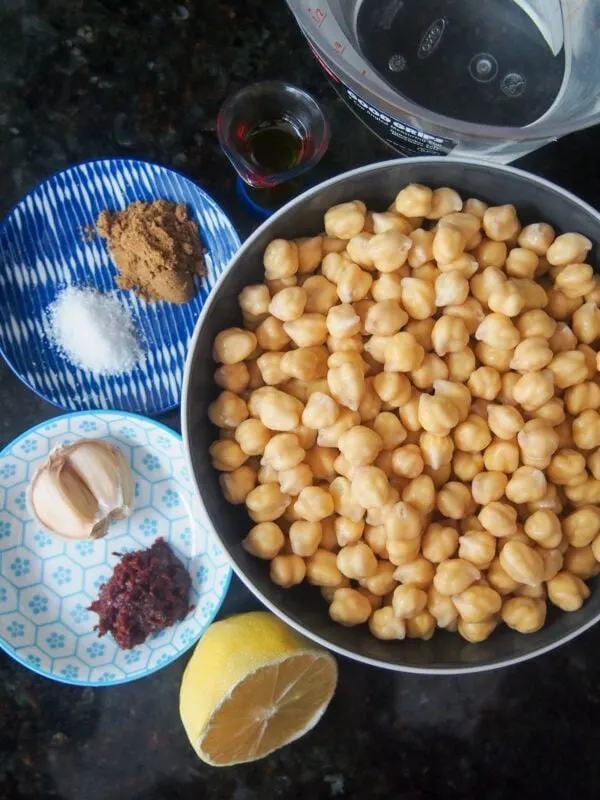
While you don’t have to, most typically serve the chickpeas and their broth over chunks of stale bread. The bread both mops up the liquid, but also dissolves into the soup to give it a silky smooth texture.
Adding an egg is also very common, either directly into the broth or as a poached or fried egg on top. In both of these ways, and with the garlic flavors, the dish is a little like Spanish sopa de ajo.
The chickpeas, though, are the heart of this dish, even if the other elements give more of the flavor. Chickpeas add the bulk that makes this a full meal.
You can, if short on time, start with canned chickpeas. However, starting with uncooked chickpeas is definitely better. This way they have a firmer texture which means they are less likely to break up. They also take on some flavor from the spices as they cook.
Along with egg, other common additions to top this are tuna and/or olives, as well as some fresh herbs. The tuna helps make it a fuller meal, but without it, this dish is vegan (or vegetarian, with the egg), and still nicely filling. So, feel free to add or not.
Lablabi might seem like it takes some time to make, but it’s really easy to cook. And while there aren’t many ingredients, each adds a special something to make one truly delicious and wonderfully comforting dish. No wonder it’s a Tunisian favorite.
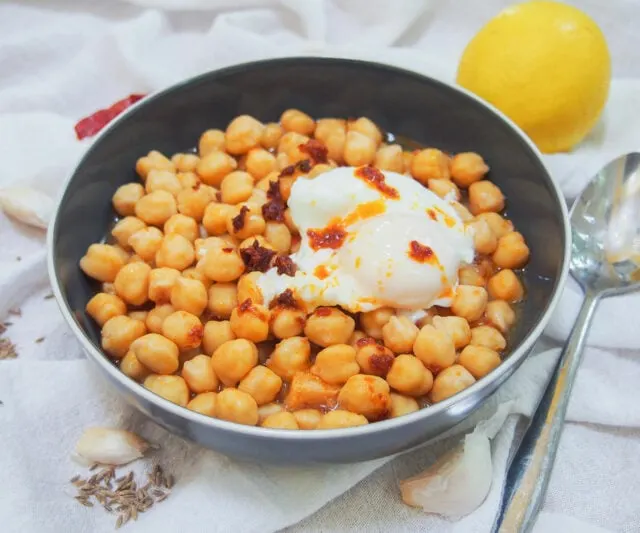
Lablabi (Tunisian Chickpea Soup)
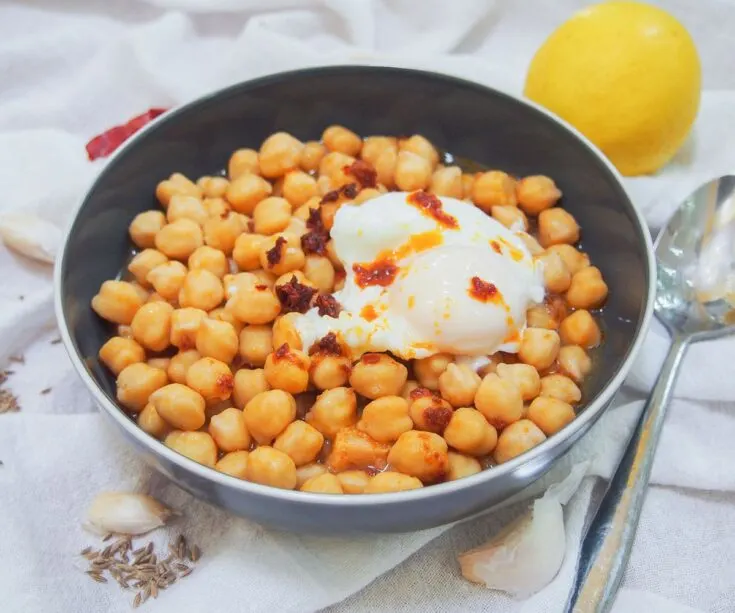
Lablabi (also written lablebi) is a very simple chickpea soup or stew, but it is packed with a wonderful depth of spicy lemon and garlic flavor.
Ingredients
For the chickpeas
- 1 cup dried chickpeas
- Water for soaking
- 3 cups water (for cooking)
- 1 clove garlic, crushed or grated
For the sauce
- 1 Tbsp lemon juice
- 1 Tbsp extra virgin olive oil
- 1 clove garlic, crushed or grated
- 1 Tbsp harissa
- 1 tsp cumin
- 1/2 tsp salt
For serving (optional but worth adding):
- 2 slices of stale bread
- 2 egg
Instructions
- Soak the chickpeas in plenty of water overnight - make sure they are well covered as they will expand as they soak and you want them to continue to be covered.
- The next day, drain the chickpeas and place them in a pot. Then add the water. Crush or grate the clove of garlic and mix it with the water and chickpeas. Place over medium-high heat and bring to a boil. Reduce the heat slightly and simmer for around 1 hour until the chickpeas are tender. (Cooking time will depend on your chickpeas, some dried chickpeas take closer to 20-30 minutes to cook to tender, so test yours periodically.)
- As the chickpeas cook, mix together the lemon juice, olive oil, garlic, harissa, cumin, and salt in a bowl to form a smooth sauce.
- When the chickpeas are nearing being done, tear or chop the bread into bite-sized chunks and place the pieces in the bottom of two bowls.
- Bring a pot of water to a boil, reduce the heat slightly then add the eggs, one at a time, to poach them. Cook for a couple of minutes until the white is just cooked (remember it will likely cook a little more in the soup).
- Once the chickpeas are cooked, stir in the sauce so that it is well-mixed through. Divide the chickpeas and the broth with it between the two bowls, pouring it over the bread so that it soaks up the broth.
- Top each bowl with a poached egg and serve.
Notes
As noted in the article, you can also optionally top with some cooked tuna, olives and/or chopped fresh cilantro/parsley.
Recommended Products
As an Amazon Associate and member of other affiliate programs, We earn from qualifying purchases.
Nutrition Information:
Yield:
2Serving Size:
1/2 of recipeAmount Per Serving: Calories: 381
If you liked this recipe, here are some similar dishes you may enjoy!

Caroline lived and traveled various places before settling in Cambridge, MA. She still fits in some travel with her family, but often settles for traveling through food instead. She shares her recipes at CarolinesCooking.com, where there’s plenty of international inspiration using seasonal ingredients, as well as creative recipes for all to enjoy. Caroline is originally from Scotland, where she grew up hiking and skiing, both things she still loves to do when her two young boys give her a chance. You can follow along with her cooking adventures on Facebook, Instagram, Twitter, and Pinterest.





